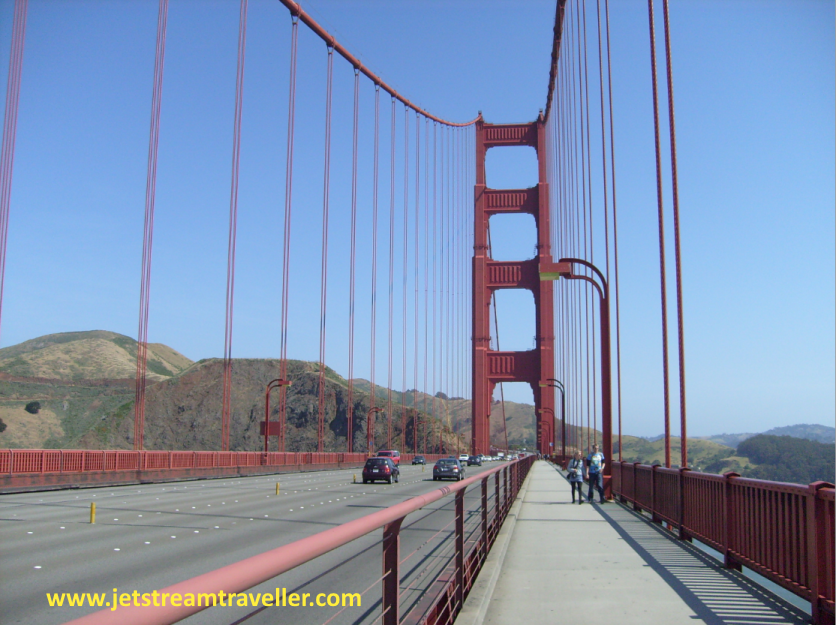
The San Francisco Golden Gate Bridge is a suspension bridge spanning the Golden Gate, the one-mile-wide (1.6 km) strait connecting San Francisco Bay and the Pacific Ocean. The structure links the American city of San Francisco, California – the northern tip of the San Francisco Peninsula – to Marin County, carrying both U.S. Route 101 and California State Route 1 across the strait. The bridge is one of the most internationally recognized symbols of San Francisco, California, and the United States. It has been declared one of the Wonders of the Modern World by the American Society of Civil Engineers.
The Golden Gate Bridge was the longest suspension bridge span in the world when it was completed in 1937, and has become an internationally recognized symbol of San Francisco and California. At the time of its opening, it was both the tallest and longest suspension bridge in the world, with a main span of 4,200 feet (1,300 m) and a total height of 746 feet (227 m). The bridge’s construction was the result of a long and bitter debate over the need for a bridge to span the Golden Gate. Proponents argued that the bridge would provide much-needed jobs and would help to boost the struggling local economy, while opponents argued that the bridge would ruin the natural beauty of the area and would be a financial burden on the city.
The Golden Gate Bridge was designed by engineer Joseph Strauss, who oversaw the project from start to finish. Strauss’s initial design, which called for a massive cantilever bridge, was rejected in favor of a suspension bridge design. The suspension design was chosen because it was more aesthetically pleasing and because it would be less expensive to build. Strauss and his team worked on the design and construction of the bridge for more than a decade, and the project was finally completed in 1937.
The Golden Gate Bridge was built at a cost of $35 million, which was paid for through the sale of bonds. The construction of the bridge employed more than 11,000 workers, many of whom were unemployed during the Great Depression. The bridge was built using a combination of steel and concrete, and the steel used in the construction of the bridge was painted in a special shade of international orange to make it more visible in the fog that frequently envelops the area.
Today, the Golden Gate Bridge is one of the most heavily traveled bridges in the world, with more than 112,000 vehicles crossing the bridge each day. In addition to serving as a major transportation corridor for the San Francisco Bay Area, the Golden Gate Bridge is also a popular tourist destination, with millions of visitors each year. The bridge is maintained by the Golden Gate Bridge, Highway and Transportation District, which is responsible for the upkeep and repair of the bridge. Maintenance on the bridge is ongoing and includes regular inspections, painting, and the replacement of worn or damaged components. Overall, the San Francisco Golden Gate Bridge is a marvel of modern engineering and an iconic symbol of the city of San Francisco and the state of California. Its construction and ongoing maintenance have been a testament to the ingenuity and determination of those who built it and continue to keep it in operation.
